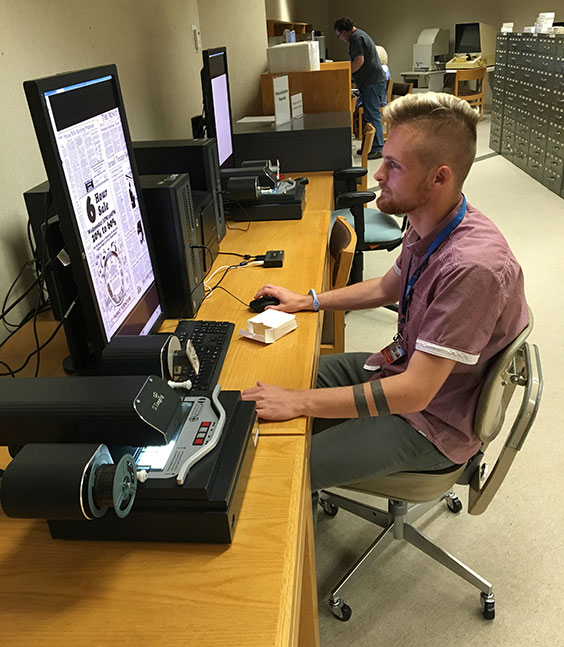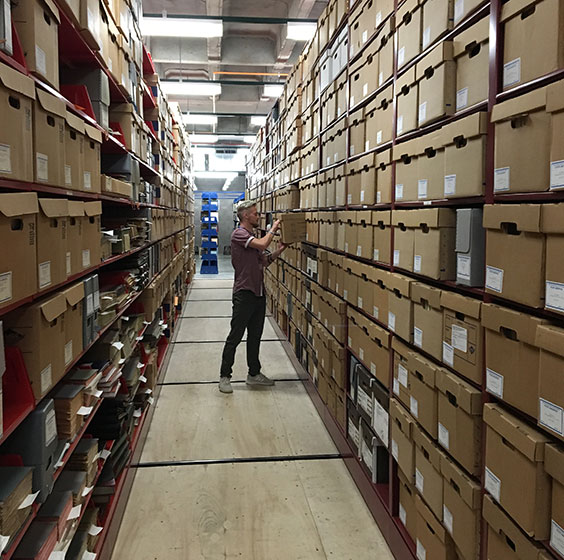Archaeology Collections and the Science of Excavating Boxes
My name is Kaelyn Olson, and I am working toward a master of arts degree in applied anthropology from Mississippi State University. During the three months of my internship, I have been working with collections from projects on U.S. Army Corps of Engineers–managed lands. In addition to the usual lab duties, I became a member of the North Dakota Archaeological Association (NDAA), worked with volunteers, and expanded my professional network. This internship was an outstanding opportunity for me to learn skills that were not covered in my university education and previous work experience, as well as honing skills that I had only limited experience in. I was already fascinated by the history of North Dakota and the northern plains, and this internship only served to deepen my appreciation of this region. While some of the day-to-day tasks of being a collections intern may not seem glamorous or exciting to the casual viewer, the work is extremely satisfying, and each new box is its own adventure. I’ll be sad to leave these collections behind as I return to school, but I am excited to know that the collections will be ready for research and additions when I come back.
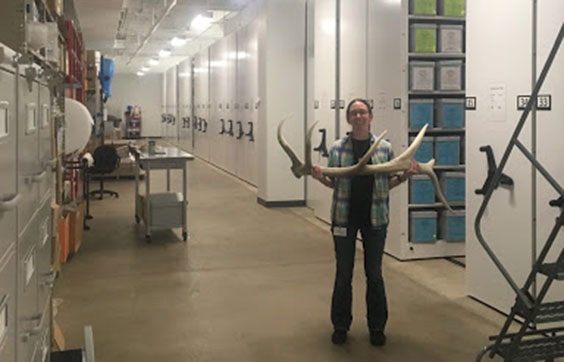
Kaelyn Olson in one of the archaeology collections storage rooms, holding an elk antler for scale.
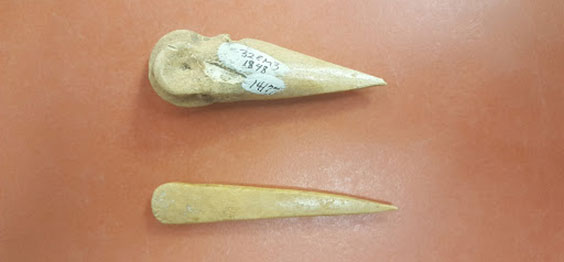
Thank y’awl for being for being so welcoming this summer!
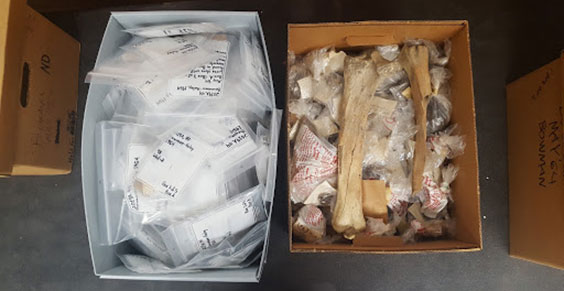
An image comparing artifacts packaged in 1964 (right) to artifacts that have been sorted, cleaned, and “rehabbed” by summer interns (left).
Hi, name is Sylvia Sandstrom and I will be graduating with my bachelor of arts degree in anthropology with an archaeology emphasis from Minnesota State University Moorhead in December 2019. I began my position as an archaeology collections intern in late May 2019, and in my time here over the past three months I have learned more than I could have ever imagined and achieved goals that make me feel entirely fulfilled.
My primary task was to work with collections owned by the USDA Forest Service, which are housed and cared for by the State Historical Society of North Dakota. Four boxes of artifacts from Government Creek were my first project, which included re-bagging the artifacts into archival materials, assigning unique accession numbers to each artifact, and entering every single artifact into our catalog database. Overall, I added 383 individual artifact records to our searchable database for this collection, and 816 records total. Aside from working with artifacts, I learned to properly archive and catalog all the important paperwork that gives any artifact its context, and therefore, its research value.
Secondarily, I took up a side project that focused on my interest in Native American pottery. Alfred W. Bowers collected a set of unique potsherds from Mercer County, North Dakota, in the 1930s, but they just made it back to their state of origin early this year. These sherds caught my attention right away, as they were different from the typical jar-like vessels we see in the northern plains. These sherds appear to form some sort of platter or very shallow bowl. I hope to continue working with this piece in the future, as well as with the wonderful folks I have connected with while conducting this research.

Archaeology collections intern Sylvia Sandstrom with unique ceramic plate collected by Alfred Bowers.
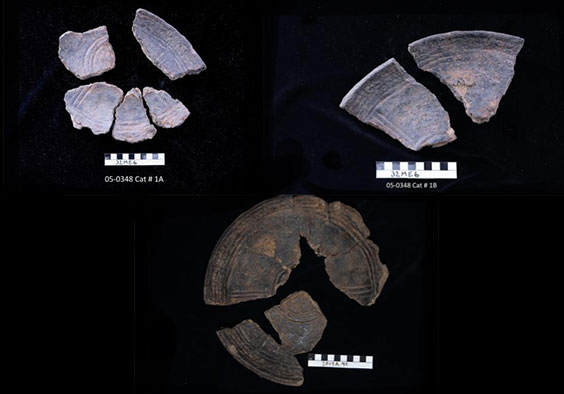
Process of discovering loose sherds and refitting them to reproduce the original vessel shape.

Archaeology collections interns Sylvia Sandstrom (left) and Kaelyn Olson (right) during their first weeks at work, size grading artifacts from On-A-Slant Village.




